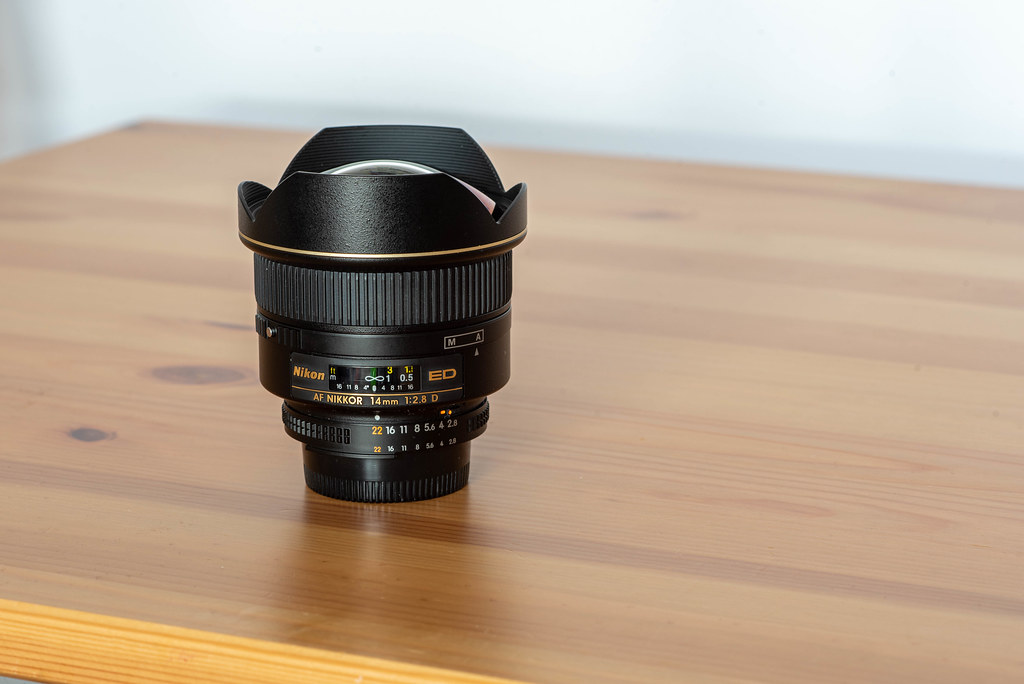But wait, don’t I already have this lens? I do, after a fashion, of course. Suppose there is a single lens that changed my work as a photographer, especially within my urban exploration work. In that case, it is the Nikkor 14-24mm f/2.8G, a lens that was a bit limited on my D300 but came into its power on the F5 and D750. But let’s admit it; the 14-24/2.8G is a heavy and big lens. I knew in the back of my mind that Nikon had several wide-angle lenses, but it was a chance that a fellow podcaster who picked this lens up for her camera. So after dropping my Hasselblad 500c, I saw this beauty in the used case at Burlington Camera. And while this isn’t one I would normally buy, having some extra cash, I went with it. This isn’t a lens that I needed, but it was one I wanted instantly. Do I regret it? Nope, because I think this lens and I will be around for a long time.
A Quick House Keeping Notes: You will notice that on the lens test sections that there are two images, the ones on the left are uncorrected and unprocessed, while the ones on the right are corrected and processed using Adobe Lightroom CC to show the native behaviour of the lens, and the power of editing and processing your work.
Lens Specifications
Make: Nikon
Model: AF Nikkor 14mm 1:2.8D ED
Focal Length: 14mm
Focal Range: ∞ – 0.2m
Aperture: f/2.8 – f/22, 7 Conventional Blades
Structure: 14 Elements in 12 Groups, 2 Aspherical Elements, 1 ED Element

Nikon D750 – AF Nikkor 14mm 1:2.8D
Build Quality
If there’s one thing you can say about this lens is that it has excellent build quality. The lens itself is made primarily of metal, with some plastic elements. It certainly can take some hits, but you must watch out, as this suffers from the same weak point as the 14-24/2.8G. The curved front element is an easy target and can be easily damaged if you aren’t paying close attention. Thankfully, the fixed lens hood adds some protection as the two larger petals extend beyond the front element, but it’s far from perfect. Additionally, you cannot attach traditional filters because of this curved element. Instead, you must use a gel filter inserted into slots over the rear element. The lens, as a result, is pretty heavy so that a smaller body will throw off the centre of gravity, but on a larger camera like the F5 or D750 (with the grip), it feels rather comfortable, and it takes up a lot less space in your camera bag. The focusing ring is big and smooth; remember to switch to manual mode using the focus mode ring before manually focusing on this lens. And for being a non-AF-S lens, I find the focus snappy on both bodies and accurate. The biggest problem with the build is not the lens itself but the OEM cover; the leatherette tends to become sticky and flake off, so if you have one that is starting to degrade, toss it and replace it with a simple neoprene cover; it does a much better job, especially adding that extra padding to protect that front element.

Nikon D750 – AF Nikkor 14mm 1:2.8D
Nikon D750 – AF Nikkor 14mm 1:2.8D
Nikon D750 – AF Nikkor 14mm 1:2.8D
Nikon D750 – AF Nikkor 14mm 1:2.8D
Nikon D750 – AF Nikkor 14mm 1:2.8D
Nikon D750 – AF Nikkor 14mm 1:2.8D
Nikon D750 – AF Nikkor 14mm 1:2.8D
Image Quality
The image quality produced by the 14mm f/2.8D is excellent and is one of the best ultra-wide lenses made by Nikon. The direct predecessor, the AI-S Nikkor 15mm f/3.5 suffered from significant ghosting, you will however still encounter some ghosting, but nothing too serious. You can see this example in the lens test chart image on the lower left side of the frame. This isn’t too serious and could even be removed with some post-processing. And you do get some flare, but nothing too serious. The one thing that the lens has is excellent distortion control, thanks to that massive curved front element. You can again see in the lens test chart that the straight lights are straight, and the automatic lens correction only had to do a bit of work. The lens is not distortion free, when you are focusing up close the distortion will be exaggerated with severe barrel distortion at the center of your frame and some pincushion at the corners. Once you back off from your subject, most of the distortion is gone, and is easily corrected in post processing. The biggest failing of this lens is corner fall-off and vignetting. You can see at f/2.8 and f/4, it is significant and highly noticeable. When you hit f/5.6 and f/8 it is still present but reduced and all but gone at f/11 and above. Again, as you can see, this is easily fixed with the application of lens correction in post-processing. But all these issues with fall-off and distortion are only present on full-frame digital and 35mm film cameras; you won’t encounter these on crop-sensor bodies. Now that the more negative aspects of the lens are taken care of, we can see that this lens, despite its issue is still an excellent option, it is sharp at any aperture from f/2.8 to f/22 whatever is in focus is dead on sharp and being an ultra-wide lens you have a wide depth of field at any aperture. And that shows that at f/2.8, you have the middle and front figures in focus, and already at f/8, all three figures are in focus. When it comes to the out-of-focus elements there is not anything special, the rendering is smooth, but you don’t buy this lens for the bokeh.
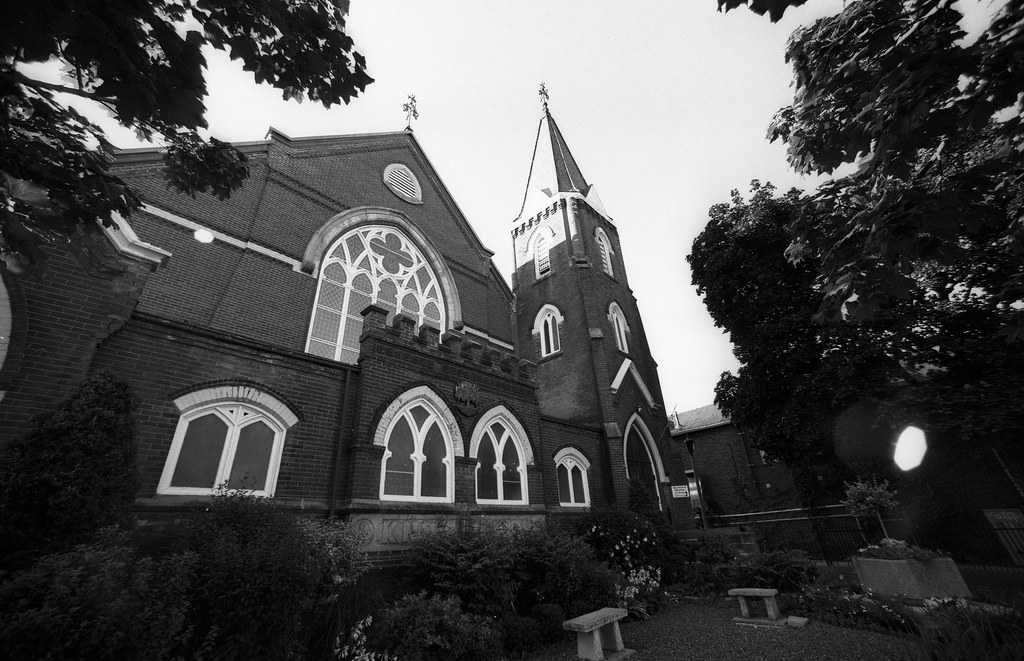

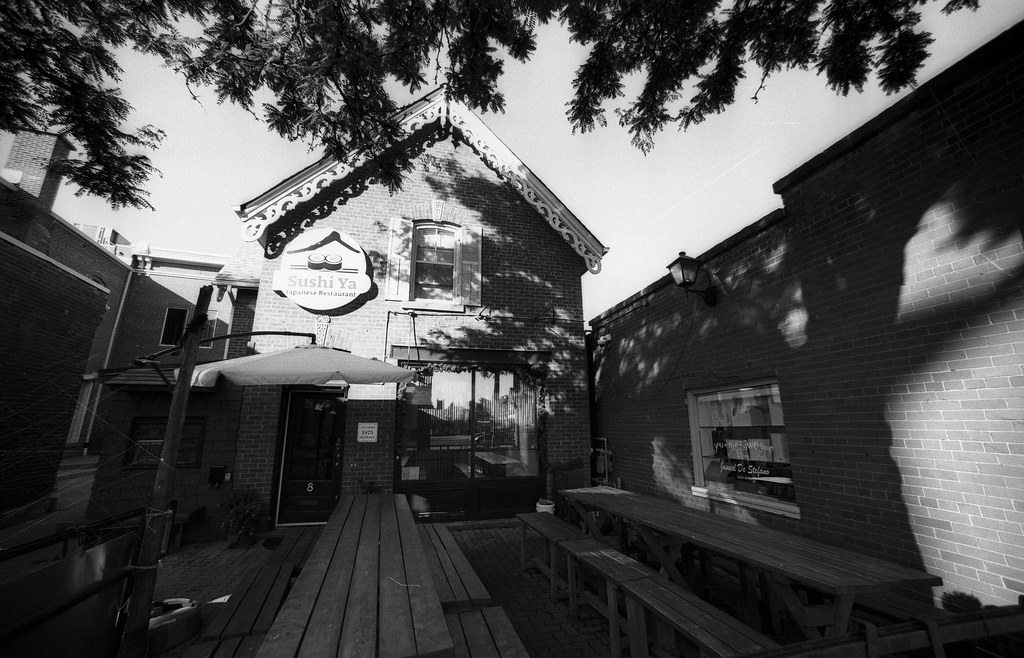

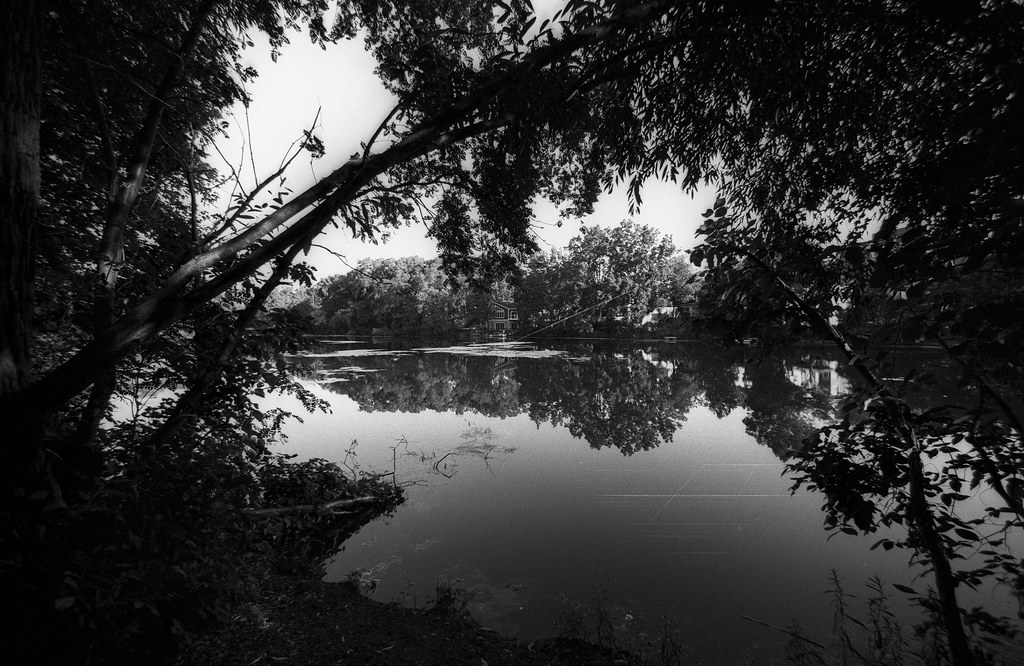
Applications
Despite being a full-frame lens, the 14/2.8D was released to help out crop-sensor cameras in the early days of Nikon’s digital SLRs. The goal is to provide the APS-C sensor with an ultra-wide option; in this case, 14mm becomes the equivalent of a 21mm lens. Which probably explains why I liked working with the 14-24/2.8G on my D300 and finally got the shots of some of the abandoned spaces that I liked. But don’t limit yourself to crop-sensor cameras; it also does an excellent job on full-frame, especially if you are a wide-angle junkie like I am. You also don’t have to limit yourself to modern digital and film bodies. Because the lens is a D-Type, it retains its aperture ring, so it will function perfectly on your Nikon F4 and even manual focus bodies like the FM and FE(2), although it does look comical on those small form SLRs. But it requires a body autofocus motor, so if your camera does not have that function, you must set the lens to manual focus. And you can also use an adapter to mount this on a mirrorless camera such as a dedicated Z-Mount adapter or an F to E mount for Sony. This lens is not a one-trick pony either for the subject matter. You can use it for landscape, architecture, real estate, urban exploration, and events. It works well for interior and exterior and is especially fun for capturing large groups in confined spaces. I would not use it for portraiture, but in some cases, it might do an okay job on environmental portraits where the environment is primarily compared to the subject. But if you like getting that out-of-focus rendering, I don’t recommend this, as you have to get in relatively close to your topic, which is not flattering.



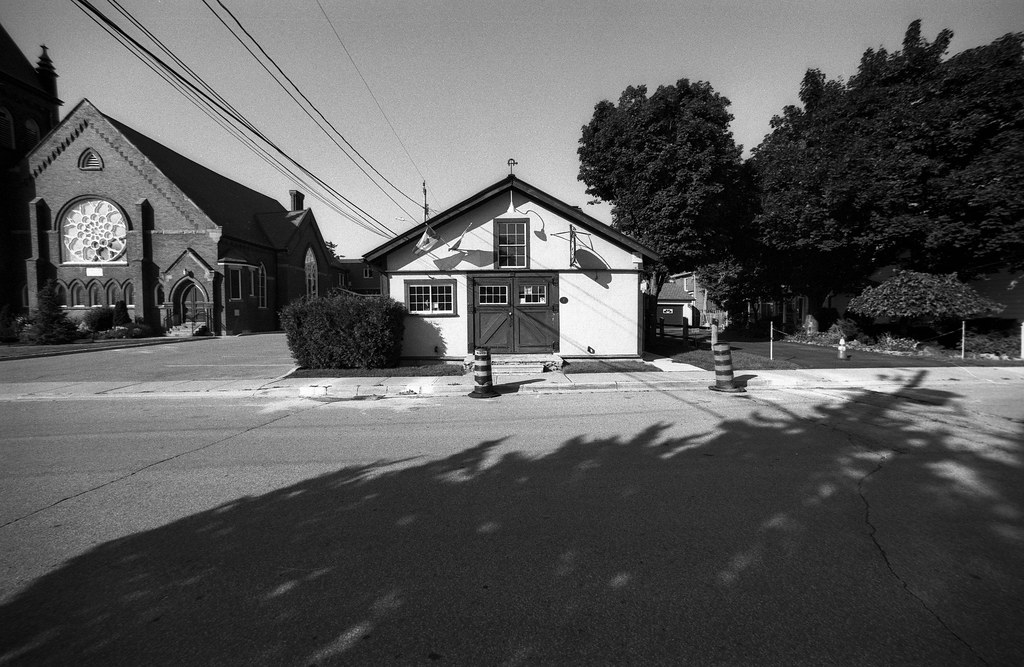
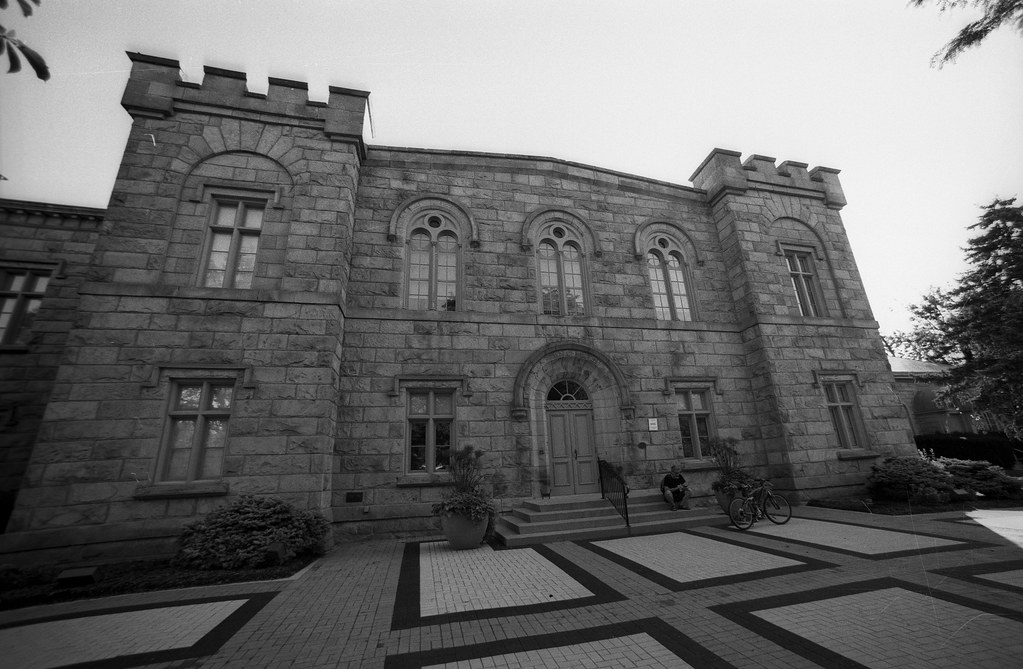
The Low Down
As I said at the start of this review, this is not a lens you need but a lens you want. While there are some cases where this lens is necessary, especially if you want a fast ultra-wide lens for a crop sensor digital body. Mostly, this isn’t a lens or the average photographer. The 14/2.8D is not a practical lens; most photographers within the full-frame realm can get what they need with a 24mm or 28mm, a 20mm on the outside. But as a former crop sensor user, I realised that many of my favourite urban exploration shots were made at the 14mm end of my 14-24/2.8G. So what work could I have done with the lens on a full-frame body in those abandoned spaces? The 14/2.8D lens is costly; on the lower end of the spectrum, you’re looking at 750$ and 1100$ at the upper end. Ensure you get a good look at the lens before purchasing to ensure the front and rear elements are in good condition. And if it comes with that Nikon leatherette cover, toss it and get a neoprene sleeve. I will continue to enjoy working with this lens, and when I have space and weight issues and want to have that ultra-wide option, I have a lens that can travel with me. But I won’t let the 14-24/2.8G go anytime soon.



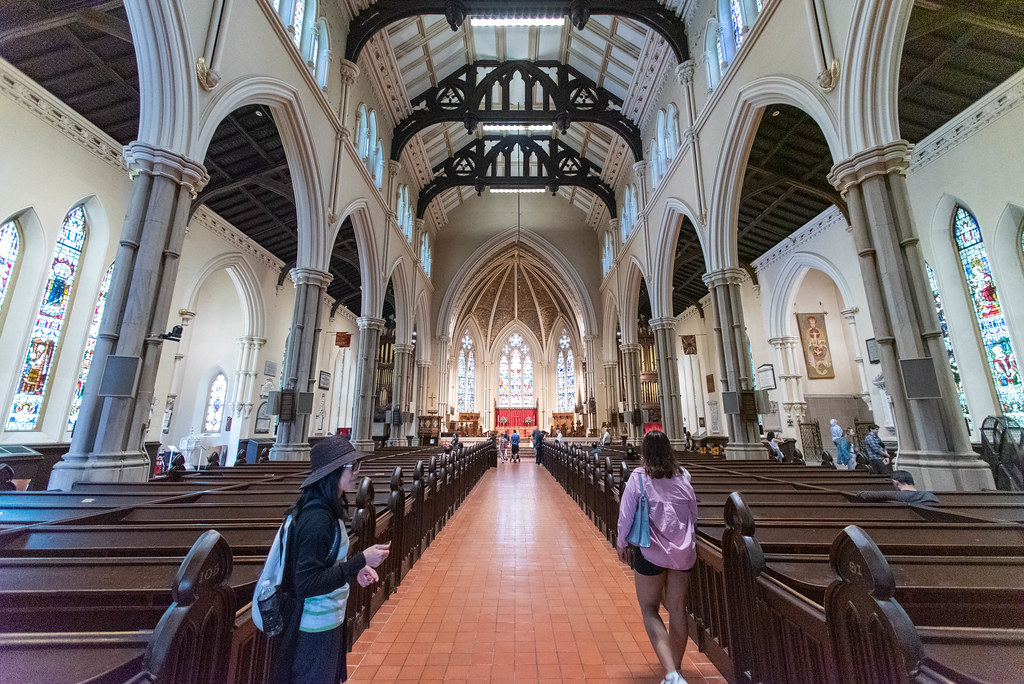

Further Reading
Don’t just take my view on the Nikkor 14/2.8D, check out these other reviews.
Ken Rockwell – Nikon 14mm f/2.8 AF-D Review
Optical Limits – Nikkor AF 14mm f/2.8 D ED Review/Test Report
Imaging Resource – Nikon 14mm f/2.8D ED AF Nikkor Review
